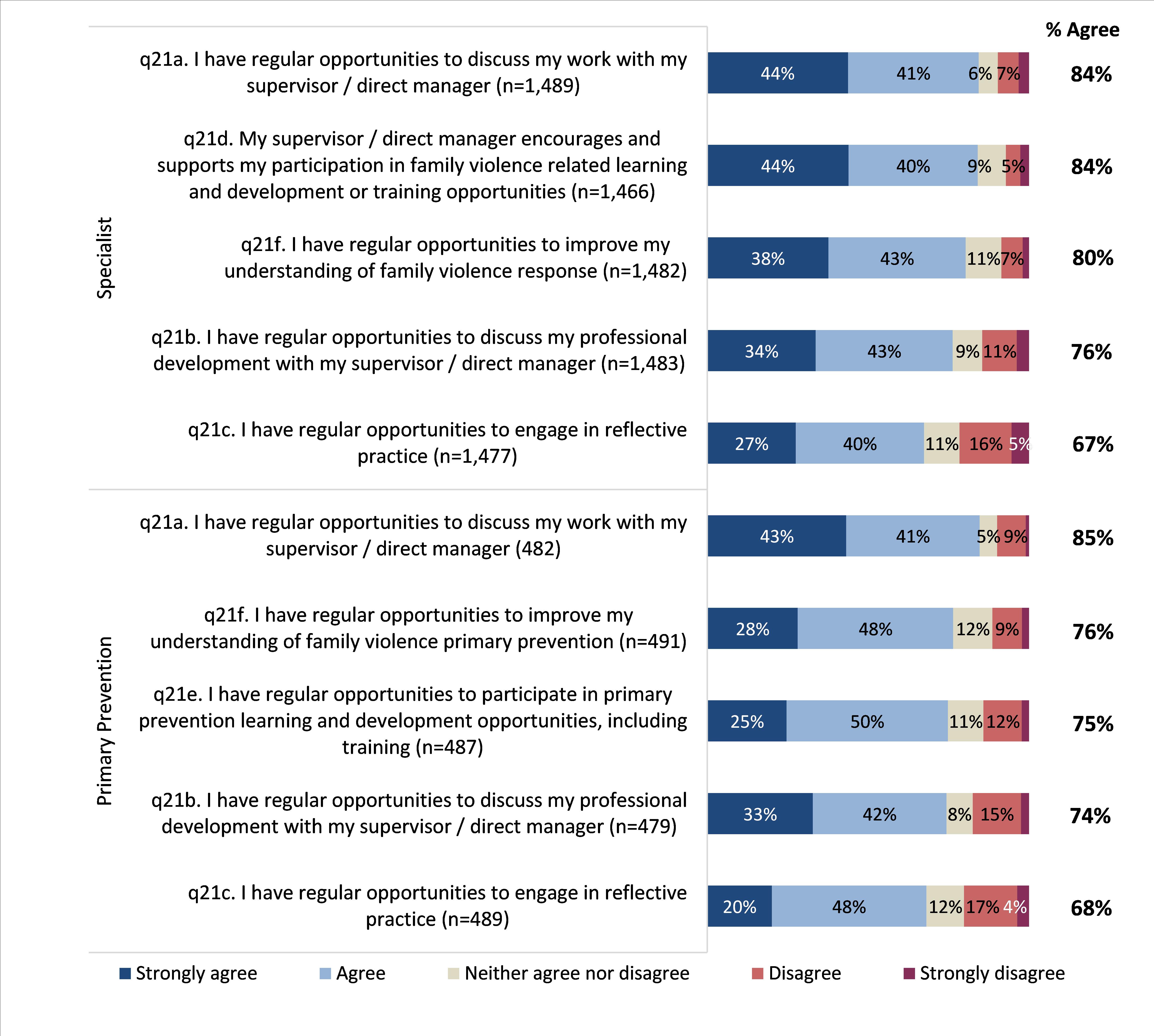Overall satisfaction
Most respondents from both the specialist and primary prevention workforces were satisfied with the quality of support provided by their supervisor or manager (75% and 72%, respectively). Very few reported being dissatisfied (14% of each workforce).
Both workforces were also asked about a range of more specific metrics associated with the support provided by their supervisors / managers, with respondents most frequently agreeing that they have regular opportunities to discuss their work with their supervisor / direct manager (see Figure 2 for detailed results).
Professional supervision: Specialists
69% of the specialist family violence response workforce reported that they receive professional supervision in their current role1, with:
- 37% indicating that they received supervision from an external supervisor from outside their organisation; and
- 27% indicating that they received supervision from another internal supervisor.
Over three-quarters of these respondents reported being satisfied with the quality of the supervision they received from their line manager / internal supervisor (76%-78% satisfied) and 86% were satisfied with the quality of professional supervision they receive from an external supervisor.
26% of the specialist family violence response workforce indicated that they were responsible for providing professional supervision1, with:
- 70% providing supervision through individual / one-on-one sessions;
- 28% providing both individual and group supervision; and
- 2% providing supervision for groups only.
Most respondents who indicated that they provide professional supervision had been trained to provide such supervision (80%), though one-in-five had not received such training (20%).
Support: Primary prevention workforce
49% of the primary prevention workforce reported that there were fewer than five other primary prevention practitioners employed at their organisation; and 29% worked with just one, or no others.
As they often make up a small cohort within their organisations, the primary prevention workforce were also asked a series of additional questions regarding how they felt others viewed their role. Overall, the results suggested that many primary prevention practitioners felt that their role was not particularly well understood or valued within their organisation, with just:
- one-third (33%) feeling that their role was extremely or very well understood by others; and
- half (49%) that their role was extremely or very well valued by others in their organisation.
When asked about relationships that they held with others in the workforce, 46% reported that they were part of a regional primary prevention partnership or network, whilst just over half of respondents (51%) reported that they were a part of a community of practice for primary prevention practitioners; most of whom found it useful (85% of those who are part of such a community).
Footnotes
- Q23. In your current role, do you provide or receive professional supervision? Multiple responses accepted (n=1,475)
Updated
